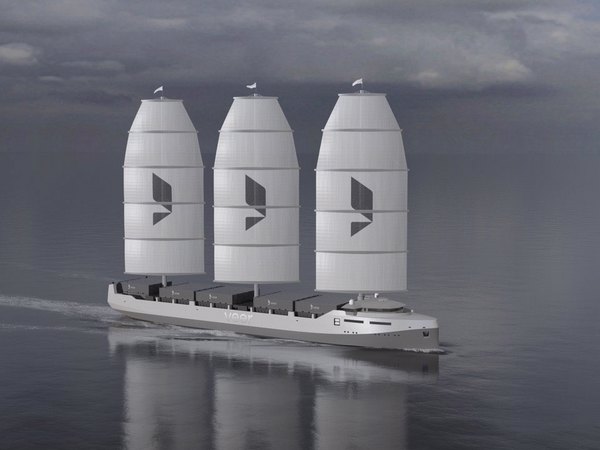INTERVIEW: Green, lean and mean – Veer.Voyage CEO on clean-energy flagship vessel
Veer.Voyage has received an ABS approval for a concept design of a container vessel that is mainly propelled forward by wind from sails. In an interview with Engine, the Bahamas-based naval architect's chief executive Danielle Doggett discusses the specifications of the futuristic container ship. PHOTO: Model of Veer.Voyage’s 100-meter-long container ship prototype fitted with sails. Veer.Voyage
PHOTO: Model of Veer.Voyage’s 100-meter-long container ship prototype fitted with sails. Veer.Voyage
As a “means of combating global carbon dioxide emissions by providing efficient and affordable zero-carbon shipping”, Veer.Voyage has conceptualised a 160 twenty-foot equivalent (TEU) with primary sail propulsion and an auxiliary hydrogen-electric hybrid engine.
Just by using the sails, the ship can reach speeds of up to 18 knots (33 km/h) without any fuel consumed.
The ship's auxiliary engine is powered by a battery and a proton exchange membrane (PEM) fuel cell. The fuel cell provides the average power required to propel the ship while batteries will provide peak-shaving and electrical balance.
In addition, the ships will be equipped with a containerised hydrogen energy system. This is a modular system that allows fully-loaded green hydrogen containers to be loaded on board.
Approximately 7,500 kg of compressed hydrogen can be carried in 18 TEU containers, allowing the ship to travel 1,200 nautical miles if fully loaded.
Veer.Voyage is currently in advanced talks with shipyards and undergoing a hazard identification process, chief executive Danielle Doggett says. She expects two Veer.Voyage ships to enter into commercial operations by 2024, and build another six ships.
The company has other plans, too. It looks to develop a larger vessel and other freight ship concepts. On the supply side it seeks to establish an offshore green hydrogen production facility to produce green hydrogen - to power fuel cells - instead of ammonia or methanol as bunker fuels for internal combustion engines.
Earlier this year, HAV Hydrogen, a Norwegian hydrogen systems firm, introduced a deck-based containerised hydrogen energy system for ships to accelerate the use of hydrogen as a bunker fuel.
Kristian Osnes, managing director at HAV Hydrogen, said the deck-based system would allow shipowners to install a retrofit option at significantly lower costs and risks than conventional retrofit hydrogen-storage installations below deck.
HAV’s containerised energy system is based on 200kW hydrogen fuel cell modules and can be set up with 1,000 kW output from a standard 20-foot-long shipping container.
By Konica Bhatt
Please get in touch with comments or additional info to news@engine.online





